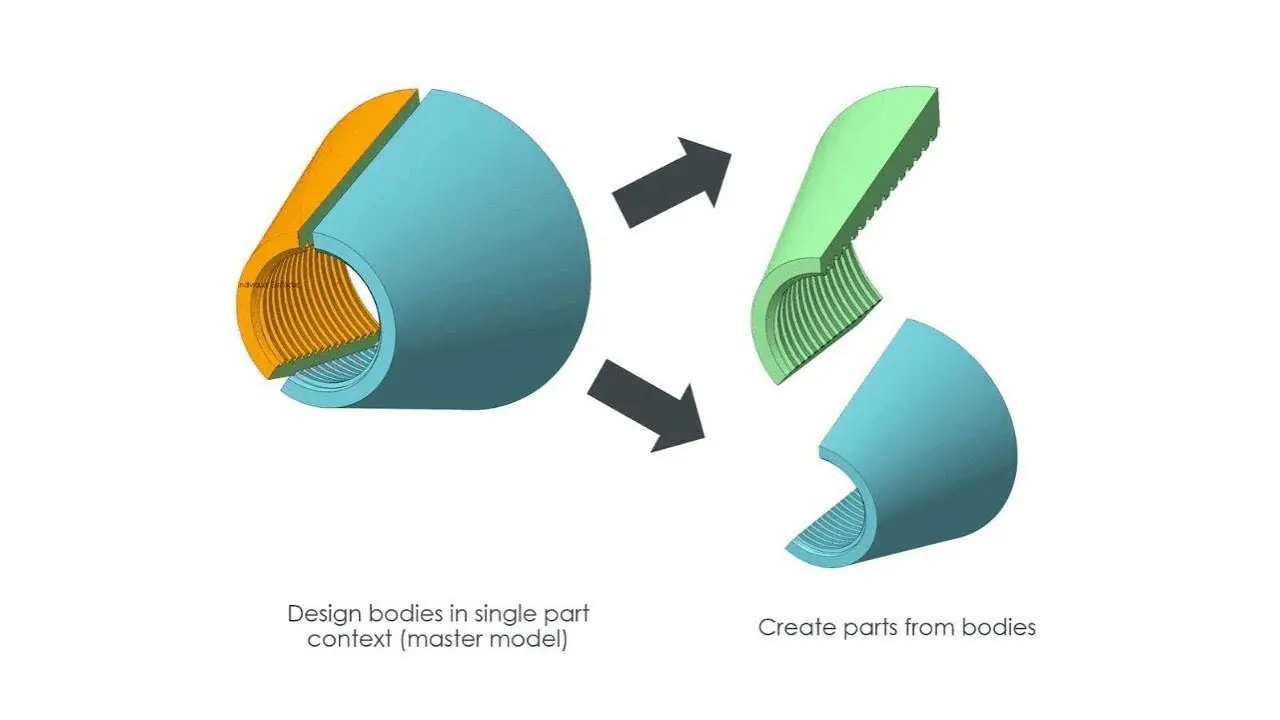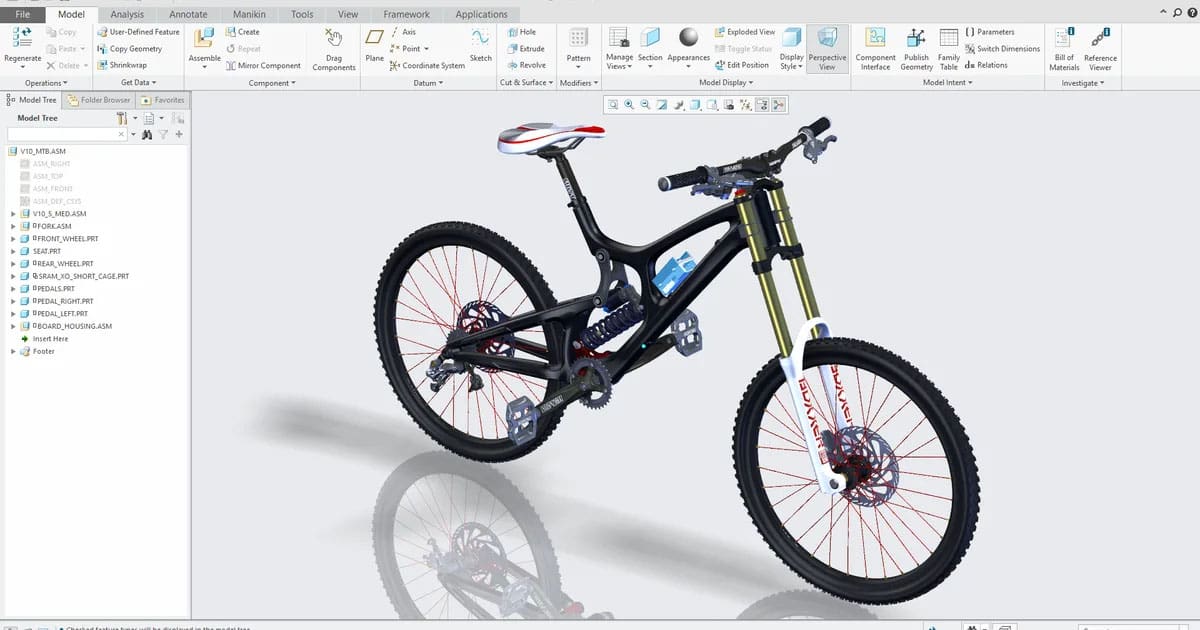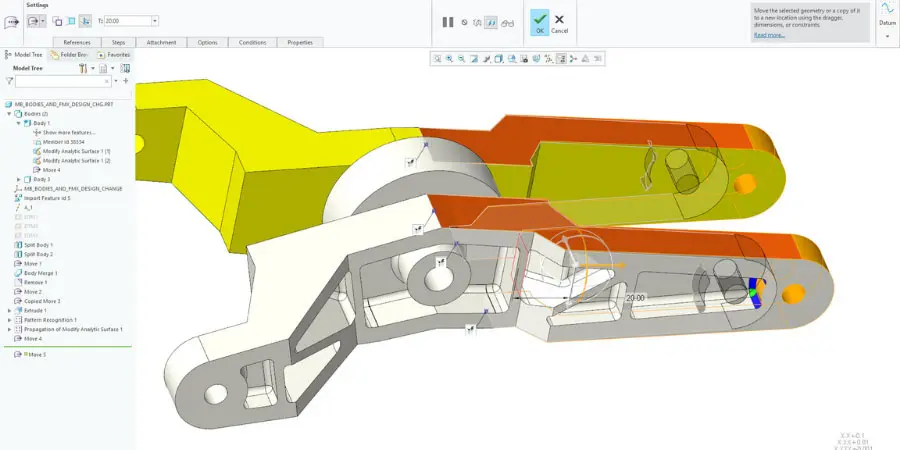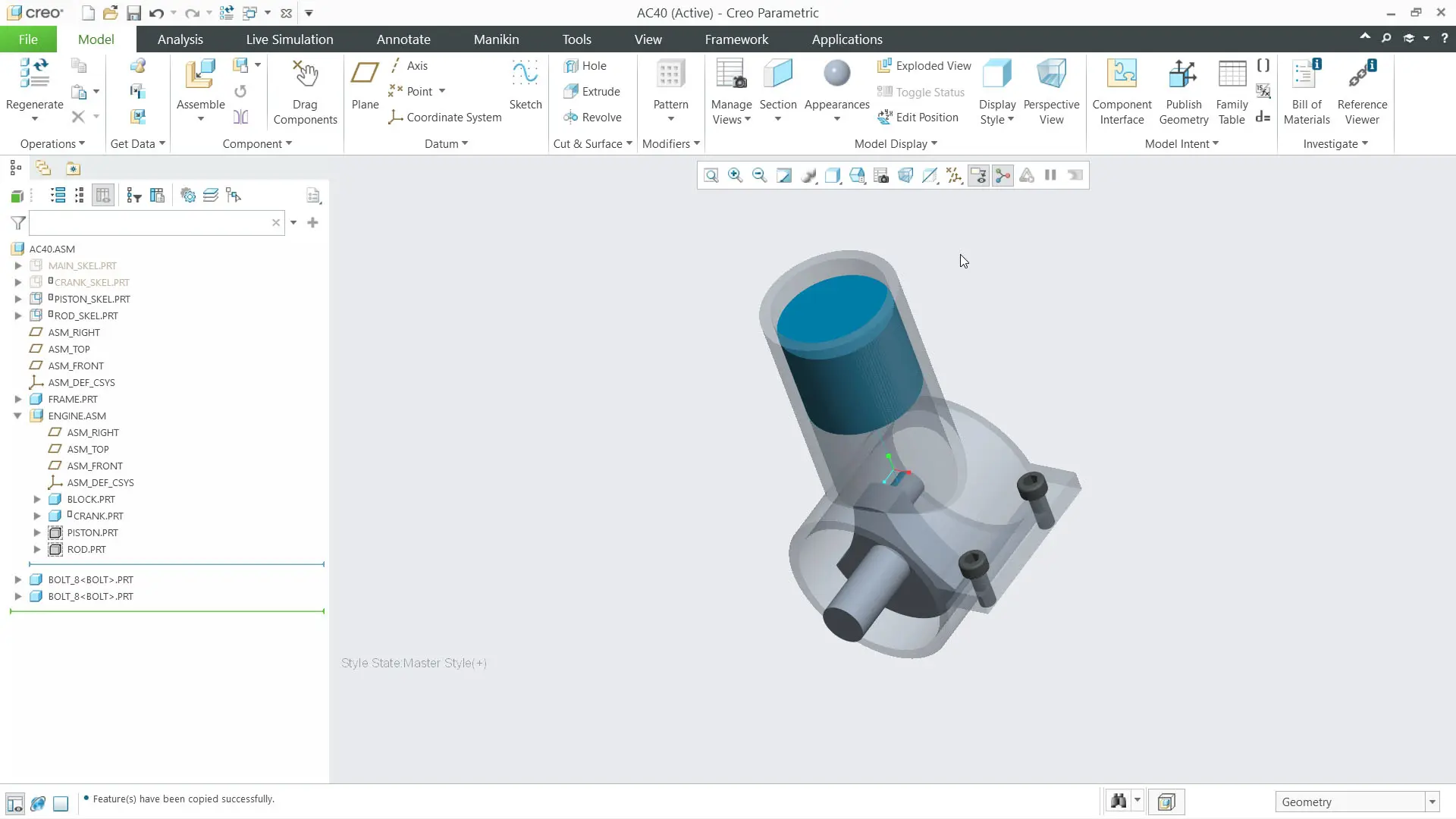October 13, 2023
What is Top Down Design & Its Impact on Engineering
READ TIME: 6.2 MINS
In the world of Computer-Aided Design (CAD), such as PTC Creo, top-down design stands out as a transformative methodology. It’s a technique that simplifies the development of intricate products, especially those with complex interdependencies among components. Join us as we delve deeper into the intricacies of top-down design exploring its significance, applications, and benefits.
What is Top Down Design?
In the dynamic landscape of Computer-Aided Design (CAD), various methodologies have emerged to streamline and enhance the design process. Among these, the concept holds a significant place. But what exactly is top-down design, especially in relation to CAD? At its essence, top-down design in CAD is a strategic approach that begins with a holistic view of a project, breaking it down into detailed components as the design progresses. This method stands in contrast to other approaches and offers unique advantages, especially for complex projects with numerous interdependencies.
Consider the intricacies of an electric sports car. Beyond its sleek and aerodynamic silhouette designed to minimize drag and optimize battery usage, there’s a labyrinth of components underneath. From the battery to the intricate wiring, computer chips, sensors, and displays, every part plays a crucial role.

How Does Top-Down Design Work?
Top-down design, contrary to its name, is not simply a literal description; it embodies a design journey that begins with a foundational sketch positioned at the pinnacle of the model tree. As this sketch gradually evolves, incorporating intricate details and complexities, it serves as a blueprint that captures essential components, conveys the design’s intent, and sets the stage for additional geometric intricacies.
The remarkable thing about this methodology is its versatility. Whether it’s large-scale machinery like MRI scanners or everyday appliances like hair trimmers, the principles of top-down design seamlessly apply.
To illustrate just how it works, let’s take the example of an electric sports car. The journey commences with a conceptual phase, focusing on the car’s overarching shape and functionality. Subsequent phases involve specialized teams diving deep into the details, ranging from the design of the drivetrain to the aesthetics of headlights and fenders. This meticulous process ensures that every aspect of the car’s design is carefully considered and refined.
By embracing top-down design, engineers and designers can create innovative and efficient solutions that meet and exceed the ever-evolving needs of various industries.
Bottom Up Design vs Top Down Design: A Comparative Insight
Bottom up design vs top down design are two contrasting approaches in the design process. Top-down takes a holistic view, starting with an overall perspective before diving into specifics. On the other hand, bottom-up design begins with individual components, gradually building them into a comprehensive system.
The advantage of bottom-up design is that it is particularly useful when the broader picture is unclear, but the specifics are well-defined. Crafting or sourcing individual components first allows for a more focused and efficient approach to creating a system.
Whether using top-down or bottom-up design, understanding their differences and choosing the right approach can greatly impact the success of a project.

The Pervasive Influence Across Industries
In engineering, top-down techniques have proved instrumental for Product Design and Development, Computer Science, and Management and Organization. Let’s explore how each field benefits from this approach:
- Product Design and Development: While a bottom-up approach suffices for projects with pre-assembled components, custom materials, intricate geometry, and cost-effective simulations demand the efficiency of top-down. This approach ensures that every aspect of the product aligns with the intended vision, resulting in a harmonious integration of components.
- Computer Science: In the ever-evolving software development landscape, competent and reliable code modules are indispensable. Adopting a top-down methodology empowers developers to comprehensively understand the overall purpose before embarking on module creation. With a solid foundation, each module seamlessly contributes to the project’s overarching objectives.
- Management and Organization: Managing a large organization entails making a multitude of decisions daily. Here, a synergy of approaches fosters a thriving and loyal company culture. While leadership, armed with strategic vision and long-term goals, makes vital decisions, an open mindset towards ideas and feedback from employees elevates the overall functioning of the company.
By embracing top-down design, these industries not only enhance their efficiency but also unleash their true potential for innovation, collaboration, and success.
Embracing The Advantages of Top-Down Design
Reflecting on our electric car example, it’s important to envision the complete experience. Besides the battery and electronics previously mentioned, there are also comfort-enhancing seats and safety features, informative gauges, and exciting additions like built-in satellite radio.
The advantages of top down design are that it provides clarity on these various systems, highlighting their differences, and enabling the breakdown of the entire vehicle into smaller, more manageable components. This approach facilitates effective collaboration among specialized teams, allowing them to independently solve problems while sharing results with the entire company.
Moreover, this streamlined process empowers project managers with deeper insights at each step. This leads to quicker, well-informed decision-making, ensuring timely completion of the project while aligning with the organization’s strategic goals.
Practical Implementation of Top-Down in 3D CAD Modeling
When it comes to your day-to-day work, you might wonder how all these approaches really impact you. Well, let’s dive into it!
MASTER MODELS
Master models contain crucial information about dimensions, surfaces, and overall layout for assemblies and subsystems. Each part can access this information, ensuring consistency throughout the entire model. Now, you might have heard the terms “master modeling” and “skeletons” used interchangeably, but there are some nuanced differences, which we’ll get into later.
ASSEMBLY CONTEXT
Understanding how the part you’re actively working on fits into the bigger picture is vital. You need to know if any changes you make will have ripple effects up or downstream. That’s where the master model comes in handy. With a master model, you can easily share data across different contexts, allowing you to reuse a single part or assembly in multiple scenarios.
MULTI-BODY PART DESIGNS
Here’s the exciting part: top-down design and multi-body design part designs can work together seamlessly. By using the master model in conjunction with multi-part designs, you gain faster part conceptualization, simpler assemblies, and robust data-sharing capabilities.
SAVE TIME WITH SKELETONS
Imagine building a car; the first basic sketch you create is known as a skeleton. It captures the design intent and serves as a central object for tracking references and interdependencies. Skeletons can even incorporate early-stage motion or kinetic features. Top-down brings benefits in three distinct areas. The key geometric design information resides in the skeleton, while dimensions and calculations are stored in engineering notebooks like PTC Mathcad. This data is then shared across all the individual components, managing relationships and features automatically.
So, what are the advantages of top-down design? Well, there are three distinct areas where you’ll see improvements.
- First, the skeleton stores essential geometric design information, while engineering notebooks like PTC Mathcad handle dimensions and calculations.
- Second, data is shared across all components and features throughout the design.
- And third, relationships between components and features are managed automatically, streamlining your workflow.
Ultimately, the real advantages of top-down design is the time and money savings it brings. Without it, making even a small change to one part of a model can become a daunting task, as it may impact numerous other components. With top-down, changes are automatically applied to affected components, making your life so much easier. And if there are calculations stored in your PTC Mathcad notebook, those will be updated accordingly too.
In essence, top-down not only simplifies the design process but also results in significant time and cost savings. It ensures that any modifications, whether minor or major, are seamlessly integrated, keeping the design consistent and aligned with the original vision.

Discovering The Advantages of Top Down Design
Whether fine-tuning existing models or embarking on a new project, you can access an arsenal of tools and techniques to amplify your productivity. With the advantages of a top-down design approach, you can achieve enhanced team collaboration, expedited development timelines, superior product quality, and minimized waste.
Ready to get started designing the products of the future? Learn more about PTC Creo 11 or start your 30-day free trial!
Links to Other Pages
- Cost and Time Savings with Clear 3D Printing: Discover how clear 3D printing can drive cost and time savings by improving prototyping efficiency and accelerating the design process.
- PDM Solutions: Moving from Excel, How and Why?: Learn why and how to transition from Excel to PDM solutions, unlocking better data management and collaboration across your teams.
- What is Codebeamer?: Explore Codebeamer, an application lifecycle management tool that enhances collaboration, traceability, and product development efficiency.
- PLM Change Management – Best Practices: See best practices in PLM change management, ensuring smooth transitions and reducing risks during product lifecycle changes.
TriStar Digital Thread Solutions welcomes questions. Feel free to CONTACT US if you can’t find what you’re looking for, or call us at 800-800-1714













Leave A Comment